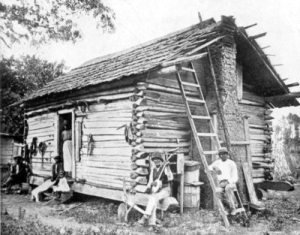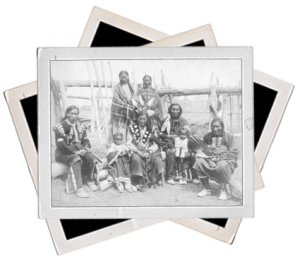Alabama first became a state in 1819. It all started in Huntsville, where the Alabama Constitution was written in the shop of a cabinetmaker by a group of delegates. That was also the year that Mobile Point became home to Fort Morgan. Then, statehood was finally gained on December 14 of that year. It became the 22nd state to enter the Union. However, it wasn’t until 1846 that Montgomery became the capital of the state.
The Southeastern region of the United States has quite a cultural history, and Alabama is certainly no exception. At various points, beginning with Alonso Alvarez de Pineda’s exploration of Mobile Bay in 1519, parts of Alabama were explored and claimed by the Spanish, British, and French.
The French were the first group of Europeans to settle in Alabama, beginning with Jean Baptiste LeMoyne, Sieur de Bienville and Pierre LeMoyne, Sieur d’Iberville, who were brothers, who came to the area via Mobile Bay in 1699. The French founded a colony in what is now Alabama and called that colony Louisiana. They also constructed Fort Louis in what is now Mobile.
In 1779, war was declared between Great Britain and Spain, bringing the American Revolution to Alabama. Mobile was captured in 1780 by Bernardo Galvez. The land held by the British in the area around Mobile was later ceded to Spain in the Treaty of Paris, which was signed in 1783.
The 1795 Treaty of San Lorenzo went into more detail than the Treaty of Paris. It used the 31st Parallel as a dividing line. Anything above that line was said to be United States land belonging to the Native Americans, while anything below was said to belong to Spain. However, the Ellicott Line survey and the large number of squatters moving into Alabama around that time began to push some of the Native American tribes out of their territory. Then, in 1812, the area belonging to Spain (below the 31st Parallel) was incorporated into Mississippi Territory. Counties were soon formed and then, 5 years later, on March 3, 1817, Alabama Territory was formed. As it was opened up to settlement, a huge amount of African Americans and Europeans flooded into the area. Then, two years after the territory was formed, on December 14, 1819, Alabama gained its statehood. Then, in 1835, the last Native American lands in the state were ceded to the government.
From 1802 to 1838, land that was formerly belonging to the Native Americans was opened up for white settlers to move in. So, that is a very genealogically significant time period. A good resource on that time period for researchers is Mary Elizabeth Young, Redskins, Ruffleshirts and Rednecks: Indian Allotments in Alabama and Mississippi, 1830-1860 (Norman, Okla.: University of Oklahoma Press, 1961). As of 1840, only a few tribe remnants remained to the east of the Mississippi River. Most had been forced to the west.
In the 1840s and 1850s, Alabama went through some serious agricultural and economic rough times. The 1837 depression that engulfed the United States caused many residents of Alabama to lose all of their money. Droughts ruined crops around that time, and yellow fever epidemics also took their toll on Alabama residents.
Slavery and states’ rights conflicts arose in Alabama because of the division between the agricultural South and the industrial North. Eventually, those conflicts led to Alabama seceding from the Union, which was on January 11, 1861. They then became part of the confederate States of America.
There was almost no fighting in Alabama during the “War Between the States” (Civil War). However, the area in and around Mobile was home to several skirmishes. Nevertheless, the social, economic, and political states in Alabama were greatly influenced by the war. On June 25, 1868, Alabama once more became part of the United States. However, the process of reconstruction led to several people moving out of the state, and those that stayed were mostly impoverished. The 1860s and 1870s saw around 15% of the white people in the state migrating, many of them to go live in Texas, instead.
In the 1870s, railroads were constructed in Alabama. That led to the mineral deposit mining industry increasing. Limestone, coal, and iron ore were some of the key mining industries at that time. However, 1880 saw the expansion of mining and other industries, including: Steel, Iron, Lumber, Textiles.
All of that industrial expansion led to the cities of Cullman, Anniston, and Birmingham popping up.
As the United States got involved in World War I, commerce and industry in Alabama kept growing. The shipbuilding industry was a huge source of income for the state. That industry led to foreign trade expansion and, meanwhile, the agricultural industries in the state were growing as well.
In 1933, the government created the Tennessee Valley Authority. Its job was to create inexpensive sources of electricity by building power plants and dams along the Tennessee River. By the time World War II began, all of the industries that saw expansion during World War I were thriving even more. World War II also led to the establishment of Huntsville’s Redstone Aresenal, which was a military training facility. Other facilities like that were also established in Alabama at that time. In fact, it was research at Redstone Aresenal that led to the “space age” beginning in the United States.
Many industries, especially agricultural industries, became more diverse and more streamlined in the 1950s and 1960s. That meant that people who used to work in agriculture had to look for other work. Many of them left the state to seek employment in urban areas in other states. That was also a time of racial disputes in Alabama. The media covered various racial issues in the state, including the 1955-1956 Montgomery Bus Boycott, the 1963 Birmingham Demonstrations, and the 1965 Selma March. Then, in 1965, the United States Voting Rights Act was passed. That meant that African Americans had a much bigger say in both commercial matters and politics in the state of Alabama.
Alabama Ethnic Group Research
Alabama Ethnic Group Research

The Genealogical Society of Utah also has some useful records on file, in the form of computer disks containing the records for the Freedman’s Savings and Trust Company Mobile and Huntsville branches from 1865 to 1874.
- USF Africana Heritage Project
- 19th Century Village Life
- Alabama African American Genealogy
- Black Families of Alabama’s Black Belt
- Born in Slavery: Slave Narratives from the Federal Writers’ Project, 1936-1938
- Joseph G. Baldwin’s The Flush Times of Alabama and Mississippi
- Using Primary Sources in the Classroom: Slavery Unit
- American Slave Narratives: An Online Anthology
- Montgomery Slave Auction: Harper’s Weekly
- Narrative of James Williams, an American Slave: Electronic Edition
- Kate E. R. Pickard, The Kidnapped and The Ransomed: Being the Personal Recollections of Peter Still and his Wife Vina after Forty Years of Slavery
- The Alabama Supreme Court and Slaves
- AL-AfricaAmer. A mailing list for anyone with an interest in African American genealogy in Alabama. Additional information can be found on the Alabama African American Genealogy web site and the Alabama Slavery and History website. To subscribe send “subscribe” to al-africaamer-l-request@rootsweb.com (mail mode) or al-africaamer-d-request@rootsweb.com (digest mode).
- AL-AfriGeneas. A mailing list to coordinate, network and strengthen the efforts of African ancestored family researchers within Alabama. You can subscribe from http://groups.yahoo.com/group/al-afrigeneas/ or by sending the following to al-afrigeneas-subscribe@yahoogroups.com: subscribe
- AL-FREEDMEN. A mailing list for anyone with a genealogical interest in Freedmen in Alabama from all ethnic backgrounds (e.g., African, Native American, Caucasian). To subscribe send “subscribe” to al-freedmen-l-request@rootsweb.com (mail mode) or al-freedmen-d-request@rootsweb.com (digest mode).
- Alabama African American Books

Large collections of Native American research and records have also been compiled by the Anniston Public Library and the Wallace State College Family and Regional History Program. (see Archives, Libraries, and Societies)
- Alabama Indian Tribes
- Historical Overview of the Cherokee U.S. Historical/Genealogical Records
- Historical Overview of the Choctaws U.S. Historical/Genealogical Records
- Overview of the Historical/Genealogical Records Concerning the Muskoke (Creek) Indians
- Guide to Tracing Your American Indian Ancestry
- Indian Tribes of Alabama
- The Great Indian War
- Alabama Indian Affairs Commission
- Alabama Indian Tribes
- American Indians
- Southeastern Prehistory: Paleoindian Period
- Southeastern Prehistory: Archaic Period
- Southeastern Prehistory: Woodland Period
- Southeastern Prehistory: Mississippian and Late Prehistoric Period
- Mississippian and Late Prehistoric Period
- Alabama-Coushatta Indians
- Among the Creeks
- Muscogee: A Study of the Creek Indians
- A Creek Indian Bibliography
- Creek Lanuguage Archive
- Creek Indian Researcher
- Poarch Band of Creek Indians
- The Dawes Commission and the Enrollment of the Creeks
- Laws of the Cherokee Nation
- 1835 Cherokee East of the Mississippi Census Index
- Sequoyah
- The Chickasaw and Their Cessions
- “Chokmah!” The Chickasaw Historical Research Page
- Mississippi History Now — Chickasaws: The Unconquerable People
- Choctaw Nation of Oklahoma
- Mississippi Band of Choctaw Indians
- Mississippi History Now — Pushmataha: Choctaw Warrior, Diplomat, and Chief
- U.S. Department of the Interior, Bureau of Indian Affairs
- Lost Worlds, Alabama — Public Indian Sites in Alabama
- AL-INDIAN-TRIBES. A mailing list for anyone researching their Indian ancestors to discuss and share information regarding Indian tribes that lived in or traveled through Alabama. To subscribe send “subscribe” to al-indian-tribes-l-request@rootsweb.com (mail mode) or al-indian-tribes-d-request@rootsweb.com (digest mode).
- Alabama Native American Books (amazon.com)
Alabama History Databases and other Helpful Links
State Genealogy Guides
[mapsvg id=”13028″]
